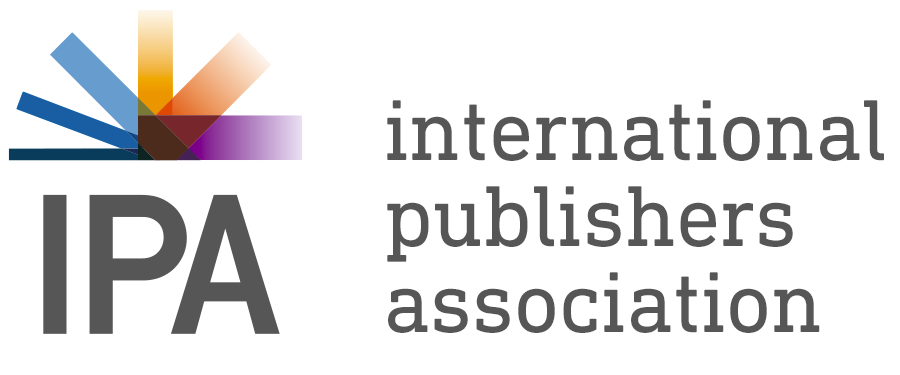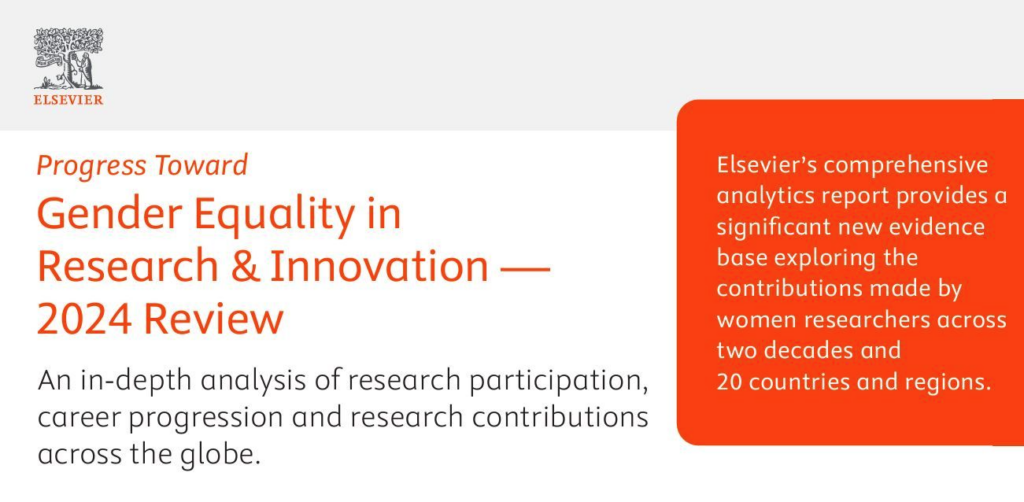1. How many reports have there been before, and why is Elsevier involved in these reports?
Elsevier has released several reports on gender and diversity in research prior to this one. Specifically, there have been three major reports: “Mapping Gender in the German Research Arena” (2015), “Gender in the Global Research Landscape” (2017), and “The Researcher Journey Through a Gender Lens” (2020) (the central landing page for all reports, including the 2024 report and companion dashboard, can be found at Gender and Diversity in Research | Elsevier)
Elsevier’s involvement stems from a commitment to understanding and addressing gender disparities in research. By providing data-driven insights, Elsevier aims to support informed policy-making and interventions to foster a more inclusive and equitable research environment.
2. What are the top 3 conclusions from this report? If you had to answer the question: “Is the situation better today for female scientists?” what would you say?
I would define the top three conclusions as follows:
- The representation of women in research and innovation is increasing and has reached the “parity zone” (between 40–60%) but this progress is uneven across fields, geographies and career cohorts. Also, it is clear from the results that equal representation does not equal equality. For example, there is a persistence of gender disparities in STEM (Science, Technology, Engineering, Math) fields and in senior positions across the board.
- Women tend to author fewer publications than men, file fewer patents, receive fewer research grants and receive fewer traditional research citations, and these happen to be the most important indicators that are currently being used for career progression.
- However, women have clear strengths that are not being recognized in today’s research world. These include the extent to which government policies cite their research, participation in multidisciplinary research, and Open Access publishing, where articles are accessible to all readers worldwide. Additionally, women are increasingly contributing to the United Nations SDGs and, in the longer run, earning patent citations. It requires a change in the current evaluation systems and in policies to have these contributions recognized.
To answer whether the situation is better today for female scientists: Yes, the situation has improved, as there is a higher representation of women in research and greater awareness of gender bias. However, significant disparities still exist, and continued efforts are necessary to achieve true gender equality and ensure that women’s voices in research are heard.
3. How does this report fit into the broader D&I strategy of Elsevier?
This report is an important part of Elsevier’s Diversity & Inclusion (D&I) strategy. It provides data to understand gender disparities in research and innovation. The goal is to use these insights to create policies and actions that promote gender equality and fix biases in the research community. The 2024 report was developed with input from Elsevier’s I&D Advisory Board, which has 10 respected members from the research and health fields. Elsevier’s CEO Kumsal Bayazit started the Advisory Board with the 2020 Gender Report to help Elsevier support inclusive research. This includes increasing the number of women on our journal’s editorial boards, raising awareness about the importance of gender in research, and helping early-career women scientists progress in their careers through partnerships. 4.
4. The IPA has members all around the world. Can you tell us about the country-specific data in the report or the related resource centre?
The report includes extensive country-specific data, highlighting variations in gender representation and performance against 17 indicators across 18 different countries and 2 regions: Europe27 and the World as a whole. For the majority of these indicators, the trends over time can be examined in the companion dashboard available for everyone. This dashboard allows users to combine country data with two more filters (career cohort and discipline) to examine trends by gender more specifically. Additionally, we added a COVID-19 filter for all health sciences fields, revealing some interesting trends for early-career women.
It would be great if we could include more countries at some point, but for now, we made a cut-off point and required at least 4,000 active women and men researchers in a given country to ensure robust figures. We also needed to be certain about the confidence levels for inferring gender, which is why we have not included China. However, all researchers for whom we could infer gender have been included in the World figure.
Some big trends:
- It is great to see that the majority of Hispanic and Latin American countries we analysed, including Italy, Spain, Portugal, Brazil, and Argentina, are excelling in gender representation.
- Across the 20 countries and regions studied, except for Argentina, women receive more policy citations. However, also in Argentina, the younger women career cohorts are cited more in policies.
- In Egypt, India, South Africa, Japan, Mexico, Brazil, and Argentina, women tend to be cited more in patents than men. This is different from most Western countries where research involving men is initially cited more than research involving women.
- It is a hopeful sign that across the world, in every country we analysed, the share of women researchers is increasing. Whether the starting point is low or high, we are mostly seeing improvements in representation, including across most senior cohorts. Unfortunately, we are not seeing the same pace of growth in the number of women grant awardees, with the Netherlands being the only positive outlier.
5. You were co-lead of this report. What were the biggest challenges in compiling and writing the report and how did you overcome them?
I was the program lead for the report and dashboard, while Elsevier colleagues Ylann Schemm and Holly Falk-Krzesinski were responsible for the Outreach & Engagement plans. As such, the tasks were clearly divided. Nevertheless, at least 20 people were involved with the core tasks, and around 60–75 internal and external reviewers provided feedback on the analysis, the dashboard design, and its content. Processing this feedback in a timely fashion was essential. Integrating diverse opinions and ensuring that the final product met everyone’s expectations was certainly the main challenge that I and the teams faced.
6. Publishing Perspectives gave a detailed write-up of the report but found the conclusions ‘unremarkable’. How do you see this?
Considering the pace of gender progress is steady but slow, our recommendations build on previous efforts. We don’t need a confrontational strategy here. The real power lies in collaboration. We know from research that when both genders work together it will lead to better outcomes, and we’re focusing on fostering these synergies. Bold and confrontational statements aren’t necessary; rather, we’re extending an open invitation to everyone to join us as allies in this journey so we can create a more inclusive and productive research environment. This approach not only benefits women but enhances the entire research community, driving innovation and excellence.
Additionally, the report mainly focuses on bibliometric indicators. While we can draw conclusions from these, it is critical not to overanalyse the data. As tempting as it might be, we should avoid drawing conclusions without further confirming them with additional qualitative assessments. We added multiple new dimensions in this edition of the report, and the feedback from the community will be important to confirm some of the findings and guide our future work.
7. What are the next steps? Will there be another Elsevier Gender report in two years? Have you considered exploring other diversity dimensions beyond gender, such as race & ethnicity, or sexual orientation & gender identity?
Two years is overdoing it as the world of research does not change that rapidly. I am confident there will be more small or large reports we will publish on the topic. For instance, we are currently working on a new indicator that measures mentorship contributions, and we can also analyse this data to improve our understanding of the importance of gender role models in research mentorship networks. The initial results are interesting and may help formulate recommendations on how best to support diversity in research.
There are several areas, such as research grants, where the underlying dynamics are not fully understood and require further exploration. Data can often be interpreted in multiple ways, using methodologies such as full counting, fractionalized counting, normalized, or not, and each approach can reveal different perspectives. Again, qualitative research will be essential to complement these findings and provide a comprehensive understanding. However, we welcome everyone to look into this and research the underlying mechanisms in more detail.
With respect to other diversity dimensions, this is indeed very important to address. The limitation here lies with the data, as we are not using self-reported data. As you can imagine, inferring gender from a name is one thing, but inferring ethnicity, sexual orientation, or other diversity dimensions from a name, country, or affiliation is quite another. However, we are definitely exploring ways to see if we can somehow provide a more comprehensive view of diversity and inclusion in research. We are aware, by the way, of parallel efforts in the academic community, which we welcome.
8. Finally, any personal words of reflection on gender inclusion in research or the broader D&I agenda?
I hope this report offers valuable insights into women’s contributions to research, the need to evolve traditional academic evaluation metrics, as well as the timeframe for evaluating these metrics, and the imperative for greater inclusiveness in the research workforce. Diverse teams are known to enhance creativity, drive innovation, and produce higher quality research that addresses complex issues more effectively. As such, gender and diversity are not just moral or ethical considerations; they are scientific necessities.
As we tackle critical issues like climate change, public health crises, and sustainable development, our research ecosystem must reflect the diversity of the world it seeks to improve. We all need to work together.

